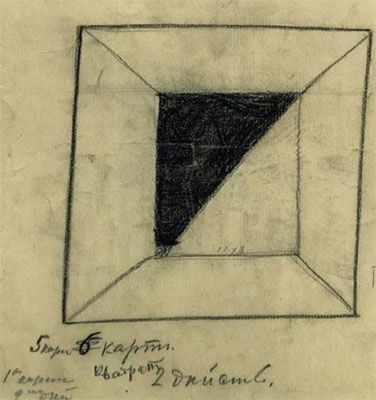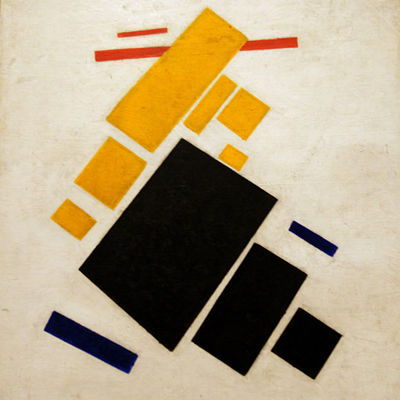Randomness as an art concept
“Chaos is what existed before creation” says Casey Reas. But it wasn’t until the late 19th and early 20th centuries that chaos became a tool of art creation once again.
For me, the most important step on the way to transitioning into a new era of art was the creation of suprematism, one of the main developments in abstract art.

"Study for Decor for Victory over the Sun" Kazimir Malevich, 1913

"Airplane Flying" Kazimir Malevich, 1915
The most easily noticeable signs of suprematism are simplicity and reduction, and while trying to create some art in p5, I noticed that the most unexpectedly fabulous things are created when using the most primitive shapes. Therefore, I believe it’s not about the shapes; it’s about their order that creates a canvas.
Randomness in music
As a pianist, I want to shed light on the application of randomness in music. It’s called aleatoric music. It uses the principles of randomness and variance in creating music pieces.
But unlike digital art, which can be fully created by the principles of randomness, in music, the musician has control over the performance. Human nature still makes us more predictable; therefore, I believe it’s nearly impossible to achieve absolute randomness in action for humans.
If you want to read more, click the following link.
